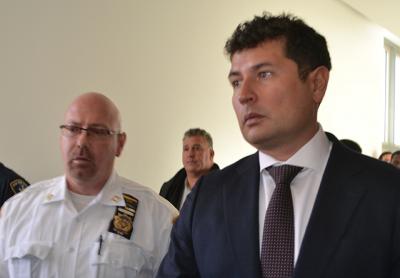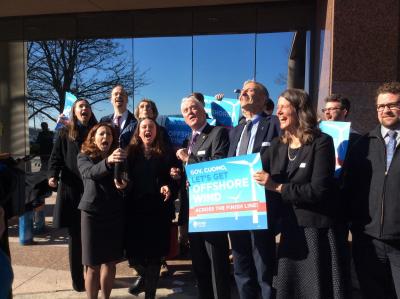Ruling in 2015 Sag Harbor Vehicular Homicide Case
Ruling in 2015 Sag Harbor Vehicular Homicide Case

A ruling on numerous motions filed in Suffolk District Court in Central Islip by attorneys for Sean P. Ludwick, the Manhattan developer accused of vehicular homicide in an early morning crash in Noyac in 2015, is expected from Justice Fernando Camacho on Feb. 16. The motions are part of a 40-page document filed with the court in December by one of the attorneys, Jonathan B. Manley. He asks the court to dismiss the 13 charges, including 6 felonies, his client is facing. Should the court fail to do so, he asks that the evidence the prosecution intends to put forward during trial be suppressed or that separate hearings be held to judge on admissibility. Raymond Varuolo, an assistant Suffolk County district attorney, has filed a 22-page response.
As a result of an accident that caused the death of Paul Hansen, Mr. Ludwick has been accused of being drunk behind the wheel of his 2013 Porsche convertible on Aug. 30, 2015. The men apparently had been drinking in Southampton and were returning home. Mr. Ludwick allegedly was driving at an inappropriately high speed and having trouble finding the driveway at Mr. Hansen’s house, on Rolling Hills Court, where Mr. Ludwick’s son was on a sleepover. The car crashed just yards away.
The prosecution alleges that Mr. Hansen’s body was partially ejected from the car upon impact and that Mr. Ludwick dragged him out, leaving him on the side of the road, and then attempting drive to his own house, in Bridgehampton. The prosecution has also said that the car had four flat tires and did not go far. A Sag Harbor police officer found Mr. Ludwick standing beside his disabled vehicle.
The defense has presented the court with a series of arguments, called an omnibus motion, pointing out what they perceive as flaws in the prosecution’s case. They attack the grand jury proceedings that resulted in Mr. Ludwick’s indictment as inadequate, with the jurors reaching the wrong conclusion.
The prosecution has countered that Mr. Ludwick could have testified himself but chose not to. According to the prosecution, seven witnesses testified and 55 pieces of evidence were presented. “Taken together, the grand jury could have reasonable cause to believe the defendant operated the vehicle recklessly and in a manner that caused the death of Paul Hansen while intoxicated.”
The defense has argued against each of the charges. One, for example, was leaving the scene of an accident in which there was an injury without reporting it to the police. The defense says Mr. Ludwick was dazed, and was found by police standing by the side of his car about a quarter of a mile from the accident. “When Southampton Town police found the defendant,” the prosecution replied, Mr. Ludwick “was seen throwing the victim’s property out of the vehicle,” which shows he was “trying to evade criminal consequences.”
The defense is also asking the court to reject the method used to determine Mr. Ludwick’s blood alcohol percentage at the time of the accident. It is alleged to have been .18 of 1 percent, high enough to trigger a raised charge of aggravated drunken driving. But the defense said the prosecution was incorrectly working backward from the alcohol percentage at the time of a test at police headquarters to determine the level at the time of the crash. The defense has also called the arrest “unlawful” and claimed Mr. Ludwick was denied his right to speak to an attorney during processing.
Mr. Ludwick, a managing partner in BlackHouse Development, which is based in his Sutton Place address in Manhattan, is now represented by third and fourth law firms. He was represented in Southampton Town Justice Court during his arraignment by Daniel J. Ollen. Bond, which was posted the next day, was set at $1 million. Within weeks, Mr. Ludwick had retained Benjamin Brafman, a New York attorney, but that relationship ended when Mr. Ludwick was allegedly getting ready to flee the country while in Puerto Rico, where prosecutors said he was taking sailing lessons and looking to buy a $500,000 boat. In addition, he allegedly was doing online research about nations that do not have strong extradition relationships with the United States.
Justice Camacho issued a warrant for Mr. Ludwick’s arrest based on these allegations, and he was remanded to jail on Jan. 21, 2016, with no possibility of bail. Since then, Mr. Ludwick has been represented by Mr. Manley’s eponymous legal firm as well as Keahon, Fleischer & Ferrane.





